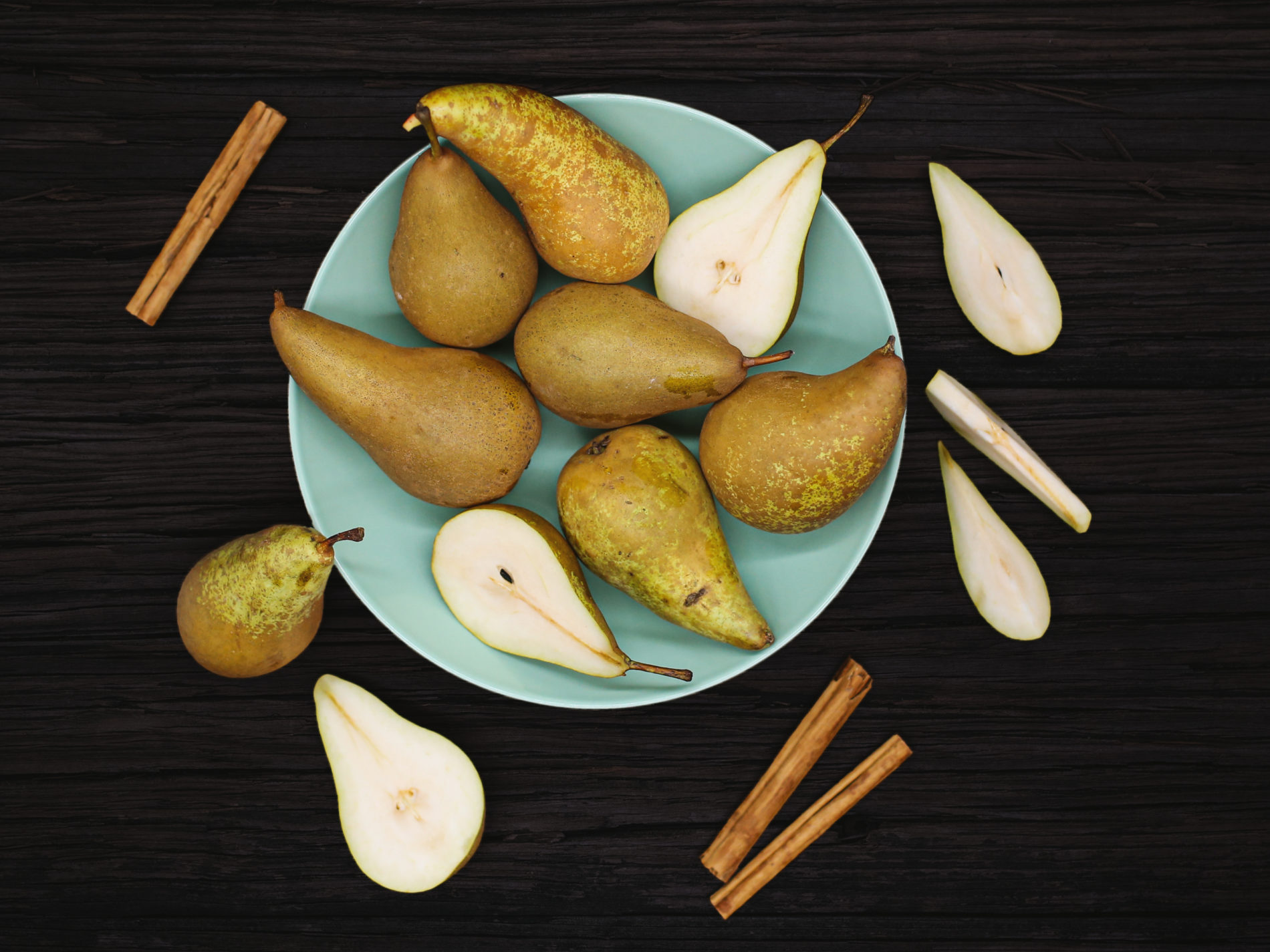When archeologists started excavations of the pile dwellings around Lake Zurich, they found traces of pear cultivation that go back to the prehistoric times. And that’s like 5’000 BC to 500 BC. Which means pears are quite common in our area. But do we know much about them? There are 3’000 known varieties around the world. While a regular pear consumer can tell – how many? – 5-6 different names at most. Pear is known for its prominent forms, but there are some varieties that may look decisively like other fruits – nashi pear looks exactly like an apple for instance.
But pear-shaped can be not only fruits. In the 20th century, more abstract use of the term evolved. The Oxford English Dictionary registers that when said of someone’s voice, “pear-shaped” means rich and vocal. Indeed, a pear is a very eloquent ingredient that can be transformed into a myriad of fantastic dishes. From a soft rich poached dessert or a clafoutis to a sharp pickled condiment.
It’s not by chance that a pear is sometimes nicknamed a butter fruit. Its soft, cushiony texture, attained by long cooking, is often such a sought after textural peculiarity. There are no nuances in the making. All is pretty straightforward. Combine a litre / quart of water with 1 cup sugar, 240 ml / 1 cup white wine, 2 Tbsp honey, 2 star anise, 2 cinnamon sticks and 1 vanilla pod (or substitute 1 tsp of vanilla extract) in a pot and bring to a simmer. Add 4-6 peeled, cored and halved pears to it and make sure they are all covered by the liquid. Simmer pears until fork-tender, for 45 to 60 minutes. Let them cool and serve with Greek yoghurt mixed with honey, a pinch of salt and a dash of cinnamon powder. Hard, sturdy fruits will be best suited for this recipe. But what to do with softer varieties?
Make pear jam! And don’t forget the chocolate – we need more energy, the winter is near. Peel and core some 1 kg / 2 lbs of pears and pulse them in a food processor until coarsely pureed. Combine them with 600 gr / 3 cups sugar, juice of two lemons, 2-3 Tbsp amaretto liqueur or any of that kind (you’ll surely need that gentle kick) and bring to a boil gently. Use a large, heavy-bottomed saucepan for that, not to scorch anything. Boil for two minutes, remove the pot from the heat and mix in 150 gr / 5 oz dark chocolate until melted and fully incorporated. Pour into hot, clean jars and boil in hot water if you wish to make preserves. But, frankly speaking, we don’t think it’s a possible scenario. Because that jam is so insanely great on a piece of a buttered toast that you simply wouldn’t want to save it long.











What do you think?